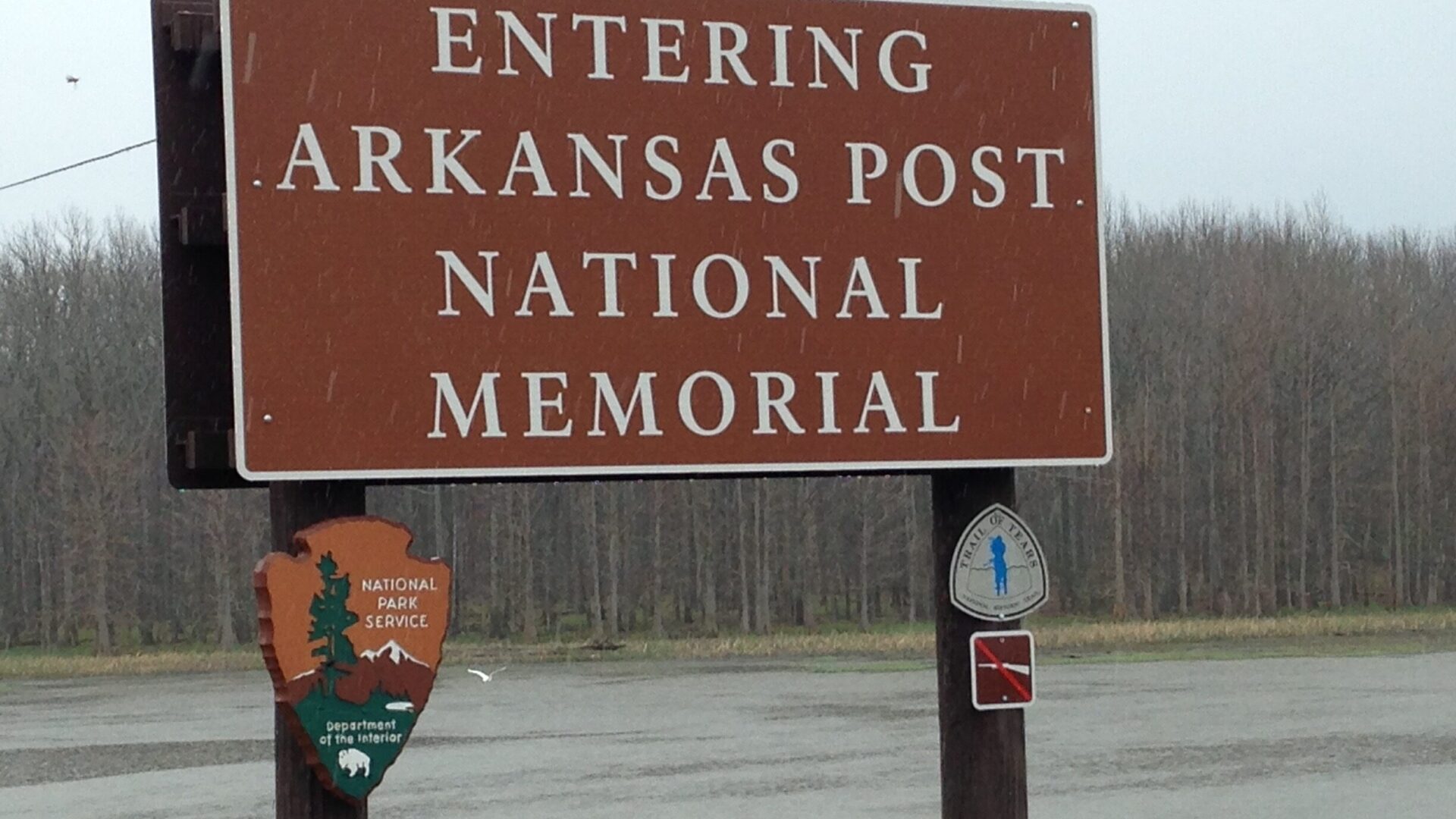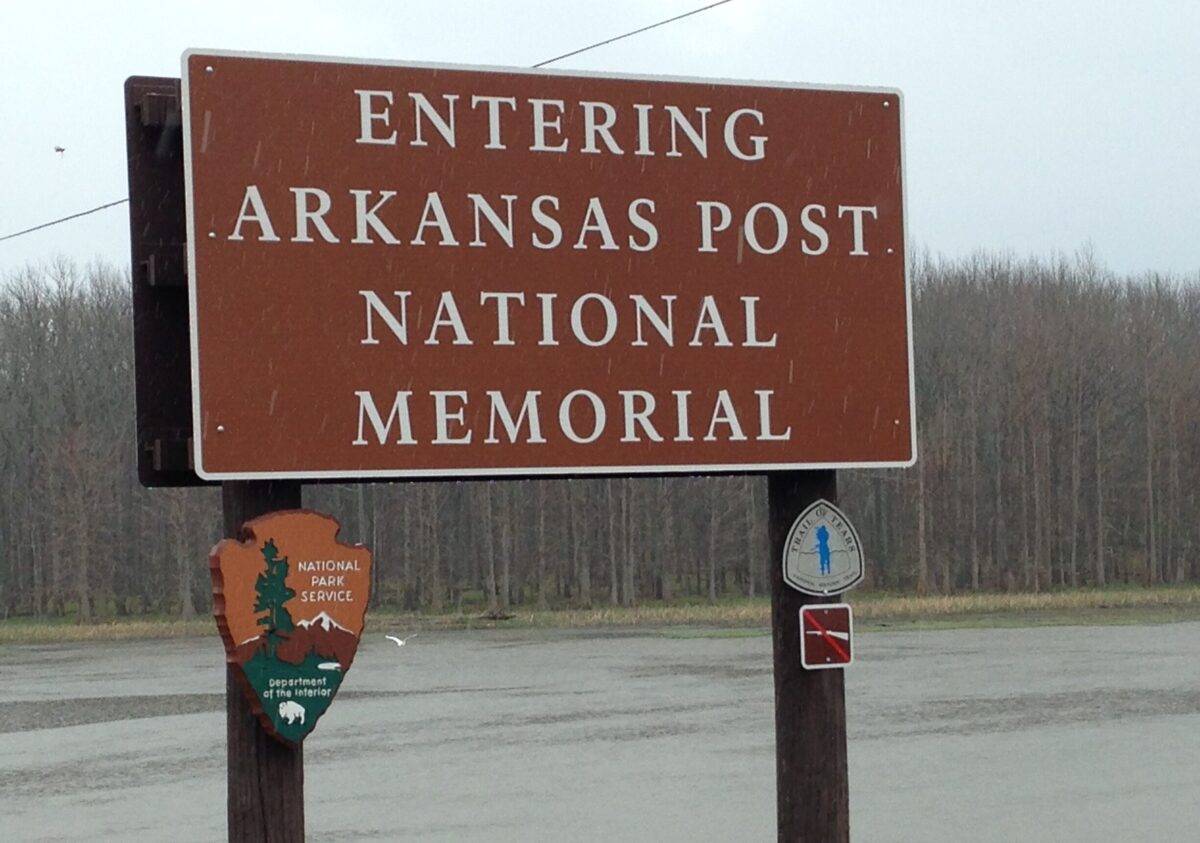Arkansas Post National Memorial
It was a dreary, rainy day when we visited Arkansas Post National Memorial, but in some way that actually added to the mystique of the place. As we walked through the old town site, now reduced to a few foundations, it was hard to picture this as a bustling town; the location of the first capitol of the Arkansas Territory.
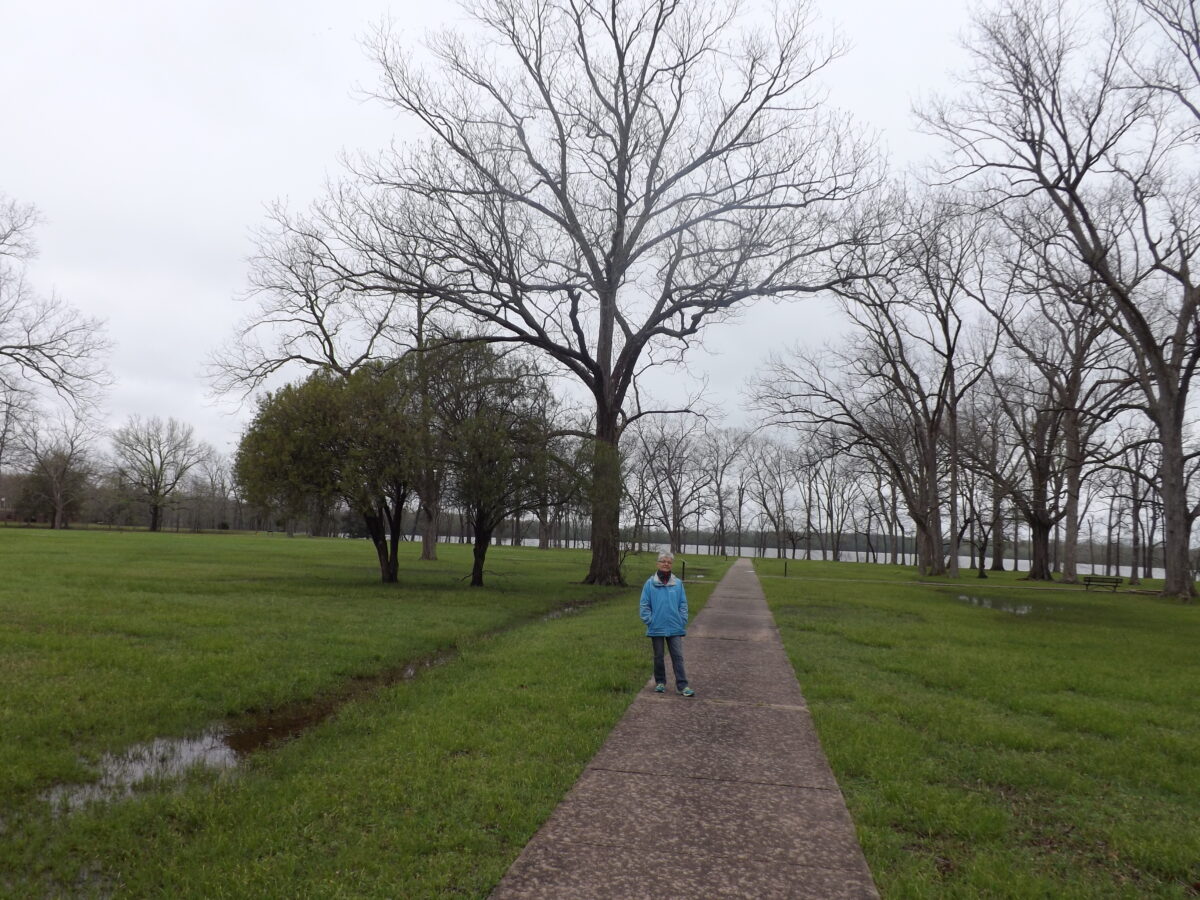
300+ Years of History
Located in southeastern Arkansas in the lower Mississippi Valley along the Arkansas River, this area was originally inhabited by the Quapaw Indians. The first European explorer to visit this region was DeSoto in 1541 but the Spanish didn’t stay. It wasn’t until 1686 that the French established a trading post there – their first permanent settlement west of the Mississippi and a staging post for Mississippi river trade. By 1763 there were 31 officers and men living there.
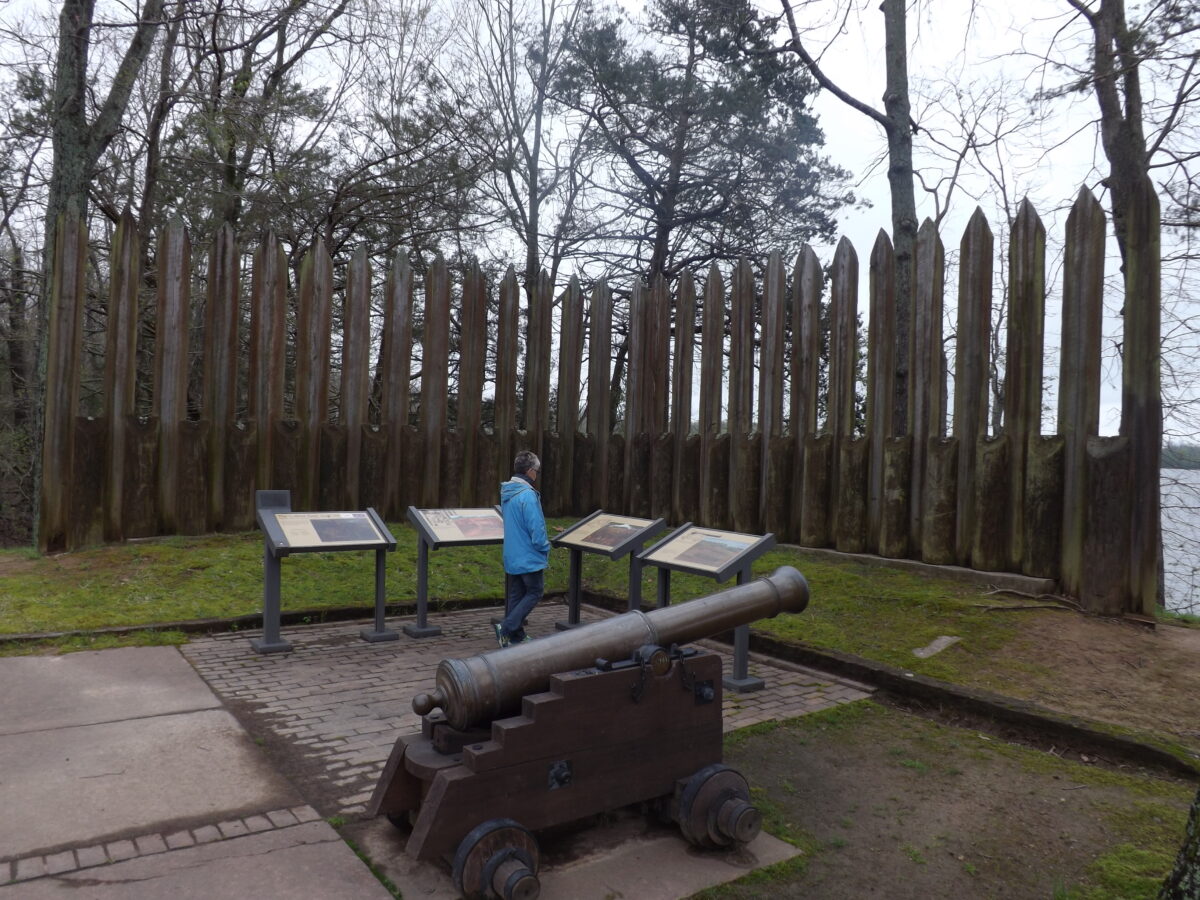
Over time (similar to what happened with the Rio Grande at Chamizal) the Arkansas River changed course, forcing the post to change location. The area also changed hands – French, Spanish, British, and finally with the 1803 Louisiana Purchase it became part of the United States.
Visualize this as a thriving community – the home of the first newspaper in Arkansas, with a bank branch, tavern, and neat rows of houses. In 1810, the post had a population of almost 500. But once the capitol moved up river to Little Rock in 1821, the population began its fatal decline, falling to 114 by 1830. Still the county seat, Arkansas Post continued to be the center of the cotton trade because of its river port, but when the cotton boom subsides, so does the town.
During the Civil War, the area briefly regained importance as a strategic military location. The Confederates build a fort here to protect Little Rock from Union forces and to try to control Union movements along the Mississippi. But an overwhelming Union assault in 1863 supported by ironclad boats as part of the Vicksburg Campaign left the fort and much of the town in rubble.
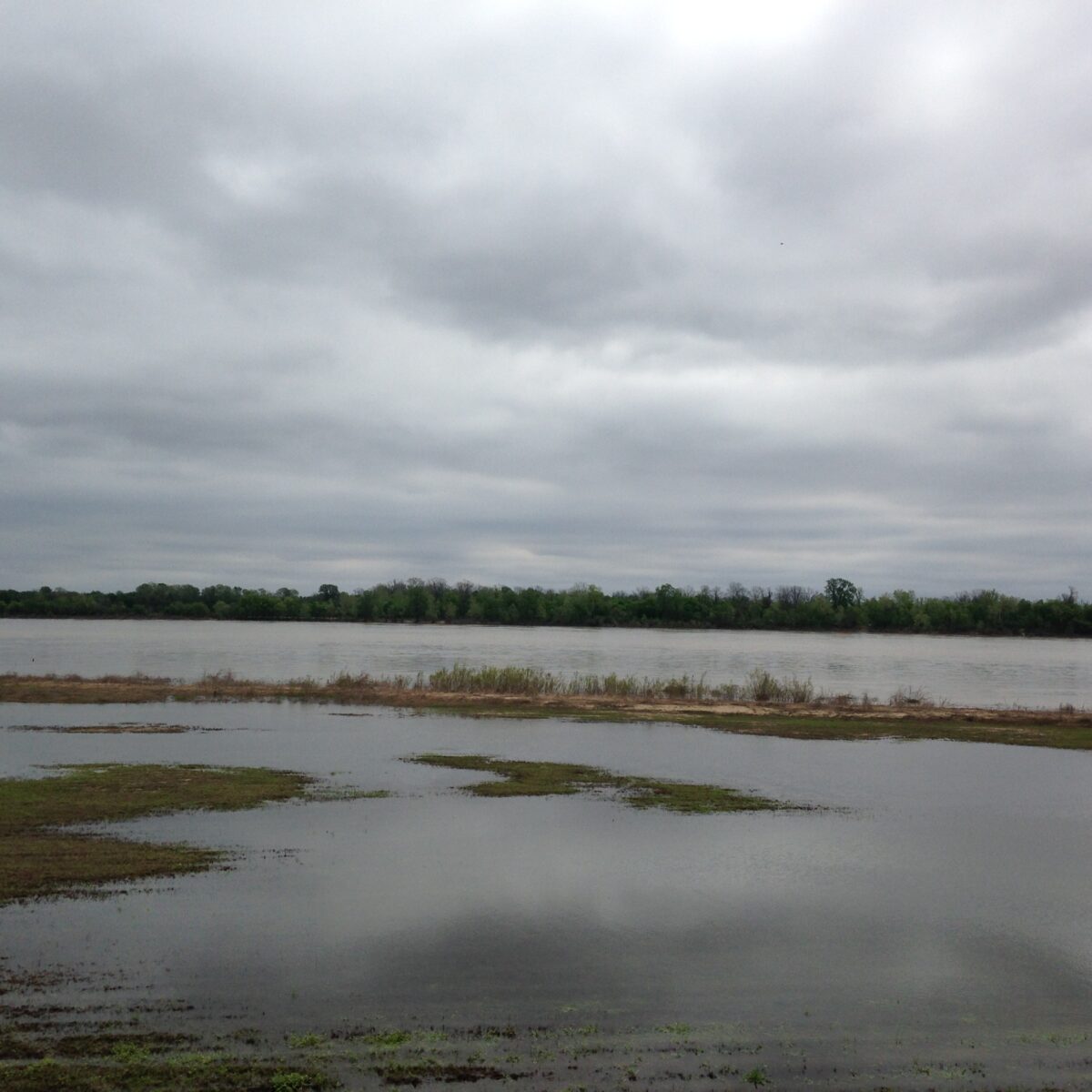
Losing its strategic value, the area reverted to rural and agricultural. The changing course of the Arkansas River left the post 1/2 mile from the river by 1912. In 1929 the area was made into a State Park, and in 1960 designated as a National Memorial and a National Historic Landmark. Today the National Park Service protects just over 757 acres as the Arkansas Post National Memorial.
Things to do at Arkansas Post
Like other national park units, there is a visitor center with information and a very good movie. But what we enjoyed most was the self-guided tour through the historic townsite, with informational signs that tell you what you are looking at… the site of the old tavern, newspaper, well and homes. Especially on a quiet, dreary day, it takes some imagination to think back to how this community endured.
There are also nature trails out to the Arkansas River overlook and through the bayou where you can actually see remains of the trench and Confederate rifle pits from the Civil War. This wildlife sanctuary is full of bird life, deer, turkey and some reptiles (think, alligators!). There are also some prime fishing spots.
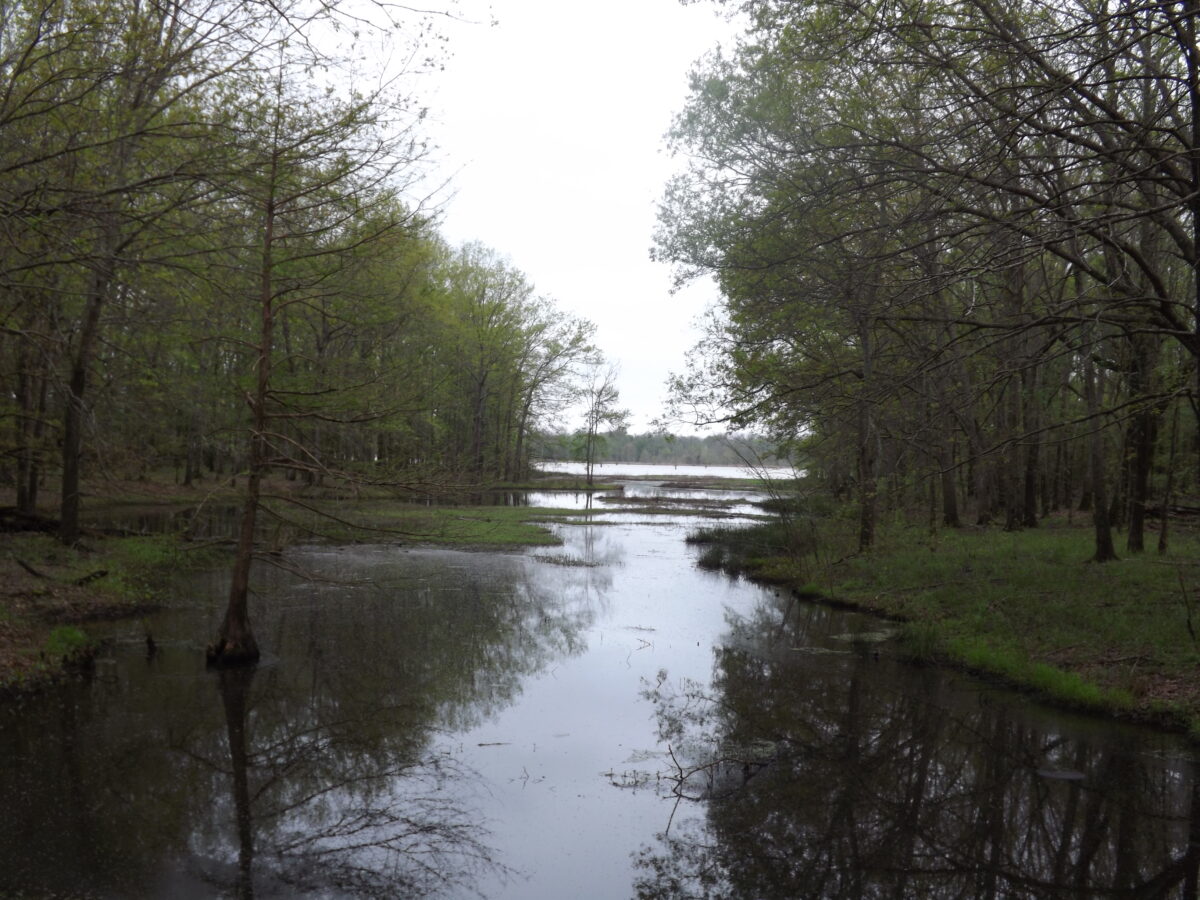
Forces of Change
Now reverted to nature, it is fascinating to see the remains of a community that could not keep up with change… subject to environmental changes from flooding, erosion and the changing course of the river, as well as to human changes as the importance of river traffic declined and commerce moved upriver to Little Rock.
300 years of history, encapsulated in the remains of a town site, trading post and military outpost. Off the beaten path, but well worth the detour and one more example of how our National Park Service protects our rich history.
#FindYourPark
#SeeAmericaFirst
Need Help Planning Your Visits?
If you would like to explore this or other National Park Units, but need a bit help in the planning, please give us a call at (480) 609-3978. We are happy to offer customized trip planning.
